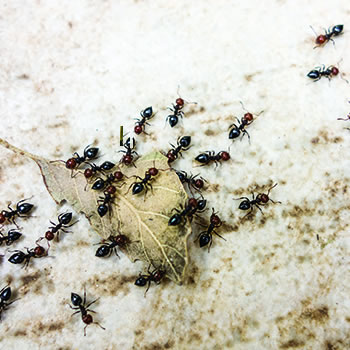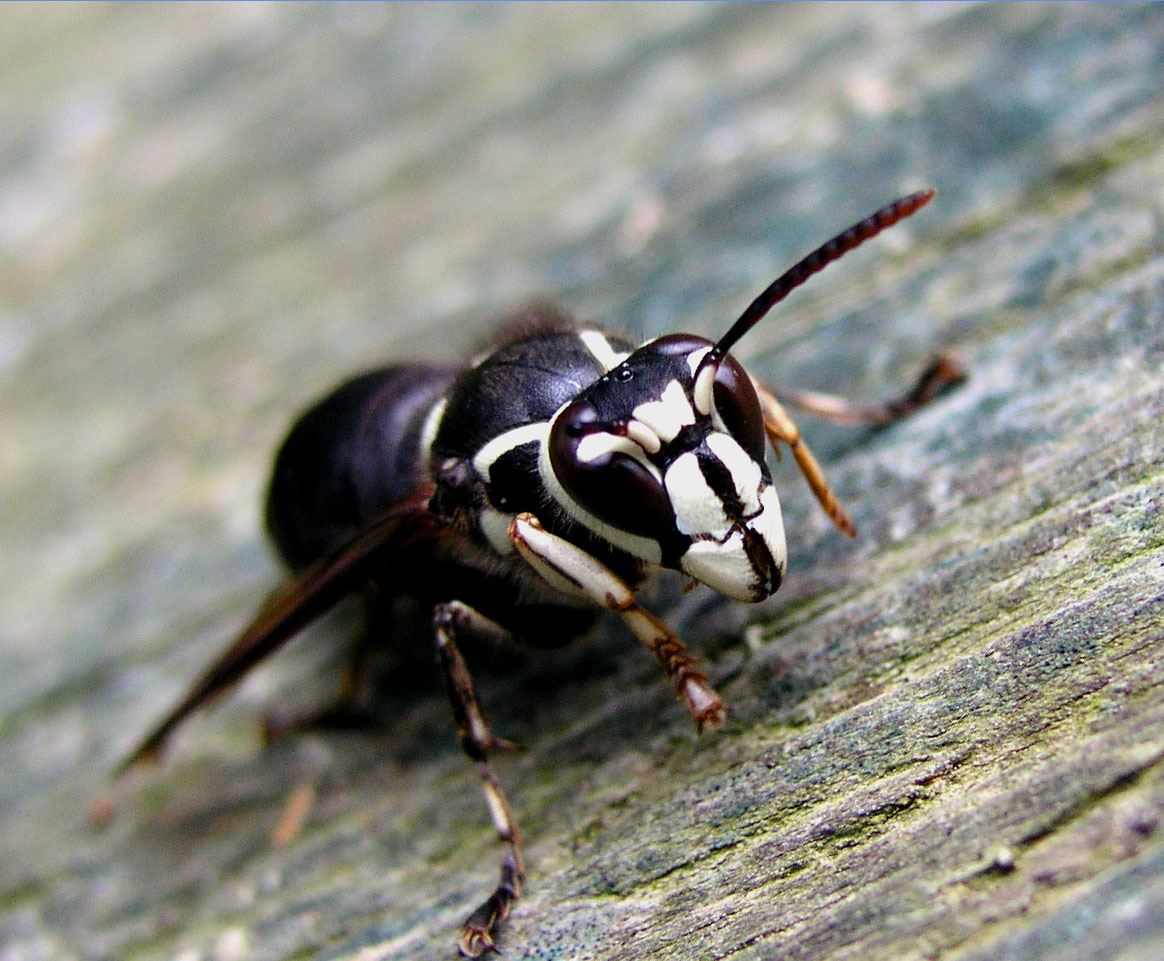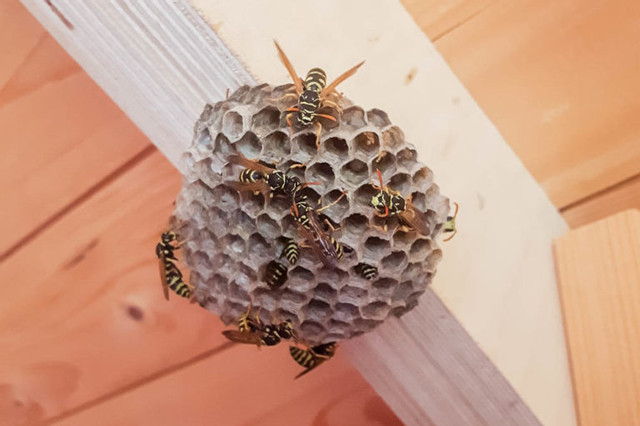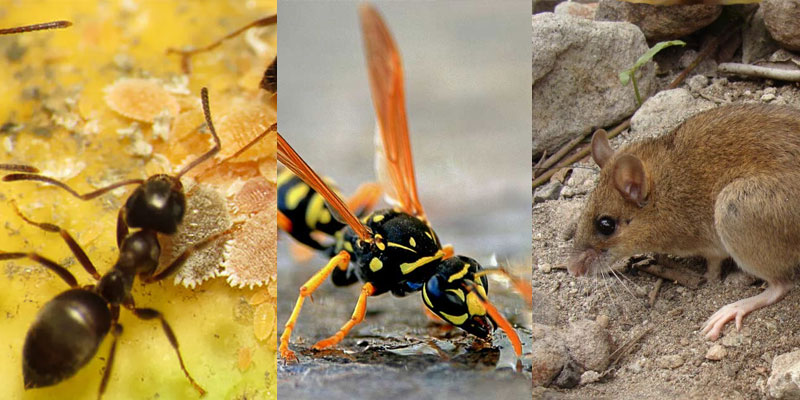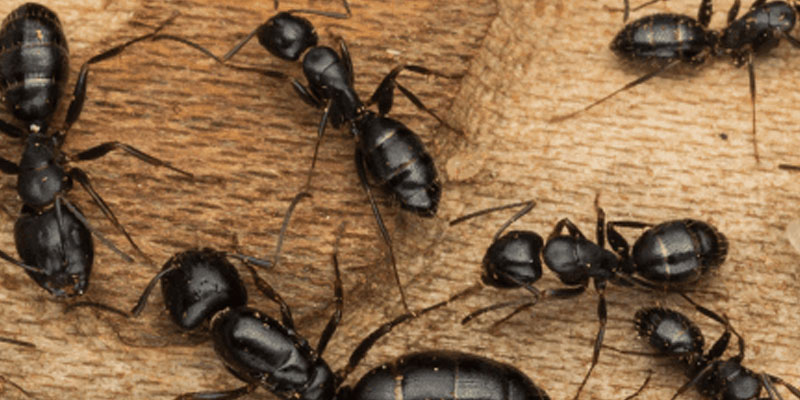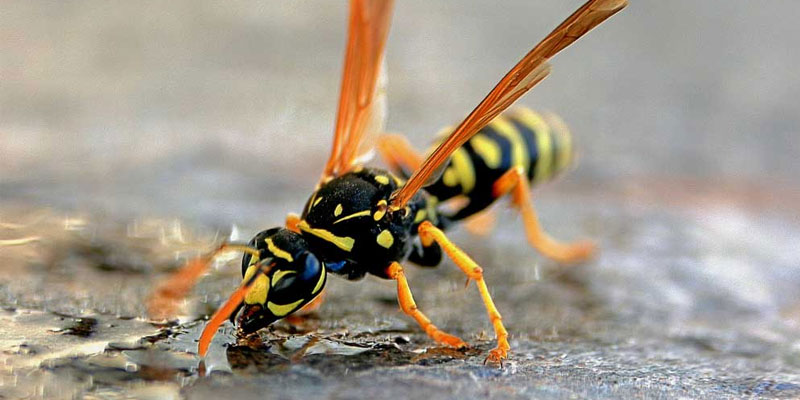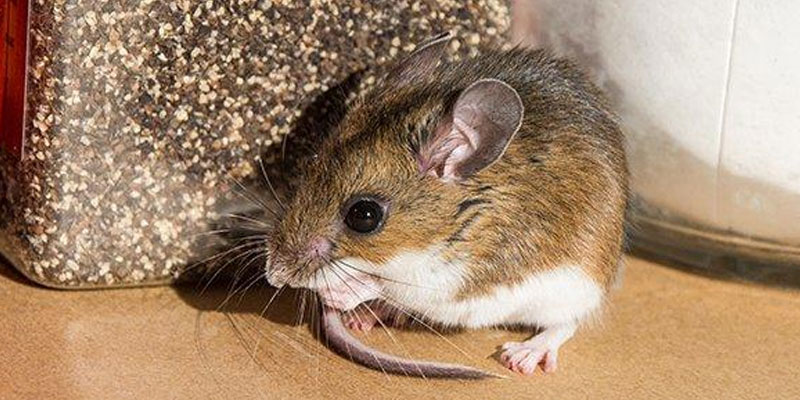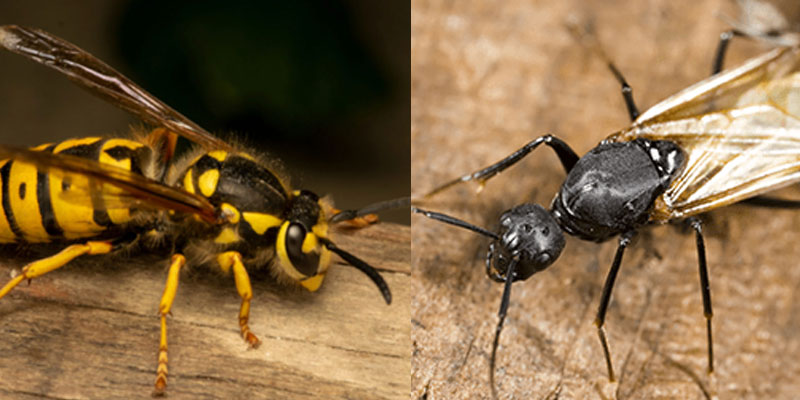Ant & Bee Program
A pest control company you can rely on.
Inspect
We conduct a free, zero obligation home inspection. We will identify the source of your pest problem.
Plan
We put together a plan that best fits your home in order to eliminate and protect against pests.
Eliminate
We eliminate your pest problem. Then, our exclussion work and monitoring system prevents them from returning inside your home.
What we Do
Ant & Bee Control in Massachusetts
Carpenter Ant Control in Massachusetts requires professional pest control.
Our Ant & Bee Program is a combination of our Ant Program & Bee Program.
How To Identify An Ant or Bee Infestation
Common Ants in Massachusettes
Carpenter Ants
Homeowners often mistake for termites. Both species burrow into wood; however, carpenter ants don’t consume it. They live throughout the Northeast and invade homes and commercial properties. Carpenter ants cause unsightly holes in wood, bringing down property value across the state.
Pavement Ants
Pavement ants are small insects and grow to about 1/16 inches in length. You can find them crawling over sidewalks and driveways, building mounds within the cracks and crevices. These insects also invade homes on a regular basis, forming lines along the kitchen floor on their way to the pantry. Pavement ants will build nests in protected areas inside your home, such as behind the baseboards. They’ll also show up around toilets and bathtubs, including garages and basements.
Odorous House Ants
Odorous house ants are similar in size to pavement ants and invade houses throughout New England. They’re often found in kitchens and bathrooms, preferring areas with high moisture. These tiny invaders stay near drains and pipes and build nests beneath the lower cabinets where it’s dark and safe. They get their name from the odor in which they produce when they’re crushed.
Common Bees and Wasps in Massachusettes
There are many species of bees and wasps in Massachusetts, and they come in a wide variety of sizes, shapes, and colors. Some are social, and others are solitary. Here are some commonly observed species and groups of species.
Bumble Bees
These familiar insects are stocky, fuzzy, and yellow (or orange) and black. The queen bumblebee typically chooses a nest site that is on or under the ground. She lays her eggs, and 10 days later a relatively small number of worker bees is born. These workers gather nectar and pollen, make honey, and care for the nest and young. In the late summer, drones (males) and queens are born, and they mate. Most of the colony dies with the onset of cold weather, but the queens overwinter in leaf litter.
Carpenter Bees
These insects look like bumblebees, but they have a completely black, shiny, hairless abdomen (the rear section). They mate in April or May. The female carpenter bee starts looking for a suitable nest site, such as weathered areas on buildings, fences, or telephone poles, and people often report seeing them hovering around buildings. She chews into the wood and lays her eggs. Adult carpenter bees emerge in August but return to the nest to overwinter. Carpenter bees seldom pose a threat to humans, as they rarely sting. However, their nest tunnels occasionally cause minor damage to wooden buildings.
Sweat Bees
Many, but not all, sweat bees are solitary. Their name comes from their attraction to human perspiration. These small, fuzzy bees come in several colors, but many of them are metallic green. They nest in the ground or in wood.
Bald Faced Hornets
They are black and white (or yellowish-white), with a white face and white stripe at the end of the abdomen, and can grow over an inch long. Their gray, papery nest is often found hanging from a tree branch or under building overhangs. Larval bald-faced hornets are fed insects, and adults consume nectar and fruit juices as well as some insects. This species can be very aggressive, and will defend its nest with a painful sting.
Yellow Jackets
You may have seen these insects buzzing around your picnic. They are closely related to hornet but are much smaller and are boldly striped in black and yellow. Also, they waver from side to side before landing. Yellow jackets build their nests underground, in the hollows of trees, or in the walls of buildings when there is an opening or crack in which to enter. They can be a nuisance at the picnic table. Give their nests plenty of space, as they can aggressively defend with a painful sting.
Paper Wasps
These wasps build small, single-comb paper nests that are open from the bottom and hang from trees and shrubs or from the eaves or ceilings of buildings. The adults feed on nectar, but the larvae are fed insects. Females often come into homes as cold weather sets in. They are also fond of the food at picnic tables, but are more tranquil than yellow jackets.
Cicada Killers
These insects are very large—they can grow up to 2” long. They have a thick body, and are reddish brown or black with dull yellow stripes on the thorax and abdomen. True to their name, they hunt for cicadas, flying high above tree trunks and branches. The female cicada killer digs a burrow in an open area, provisions it with two or three cicadas for her offspring to feed on, and then seals the opening and flies off.
Why You Might Have Ants or Bees
Ants seek out damp and rotting wood to live within. They like to live in tree stumps or fallen, rotting logs where moisture is present. Parts of your home that are exposed to the elements are most susceptible to carpenter ant damage.
Bees want a safe and secure place to call home in close proximity to a good food source. Sometimes this can mean in the siding of your house or in or around a tree on your property.
Reasons To Treat Your Ant or Bee Problem Immediately
Ants and Bees tend to be a nuisance, and an untreated colony can pose a threat to the stability of your home. Too much burrowing into the wood (carpenter ants, carpenter bees) could compromise the integrity of some housing structures. Satellite colonies may pop up if a nest is left untreated for an extended period.
Getting rid of ants and bees ensures that your home will stay safe. Professional ant and bee control is the most effective way to kill ants and bees and stop their colonization in its tracks.
Call us today to treat or prevent ant and bee control in Massachusetts so you and your family can rest assured the structural integrity of your home will be safe.
We will treat and monitor your home twice a year. You can also opt for a one time treatment. Our treatment will consist of an initial inspection of your home or business to determine pest activity problems. A Barrier Protection Spray treatment will be applied to the exterior foundation and specific ground areas to control pest activity. If the problem returns, we will treat the problem at no extra cost.
Call us today at (508) 254-3411.
Specialized Programs
Home Prevention Program
There are many kinds of pests, and you can be affected any time of year. That’s why Sutton Hill Services offers a Home Protection Plan – so your home can be protected at all times regardless of the season or the pest.
Ant Program
Getting rid of carpenter ants ensures that your home will stay safe from their burrows. Professional carpenter ant control is the most effective way to kill carpenter ants and stop their colonization in its tracks.
Bee Program
Bees can sting and will swarm when disturbed. Even one sting can be enough to send a person with an allergy into anaphylactic shock.
Mouse Program
First and foremost, mice can reproduce quickly. Just having two mice living within the walls of your home can spawn 40 offspring in a year. Now multiply that by each new offspring, and you will have a massive headache.
Ant & Bee Program
Carpenter ants tend to be a nuisance, and an untreated colony can pose a threat to the stability of your residence. Bees can sting and will swarm when disturbed. Even one sting can be enough to send a person with an allergy into anaphylactic shock.

